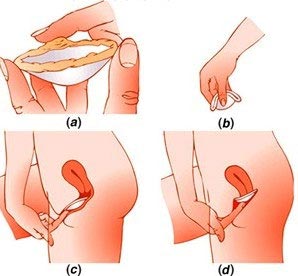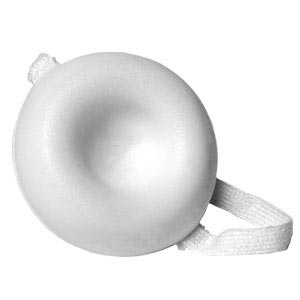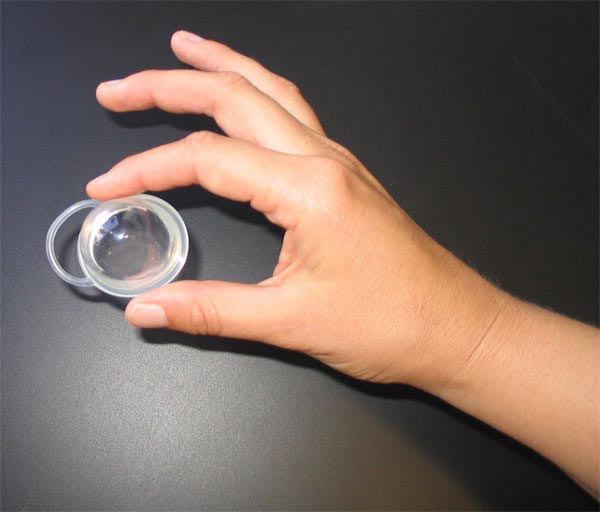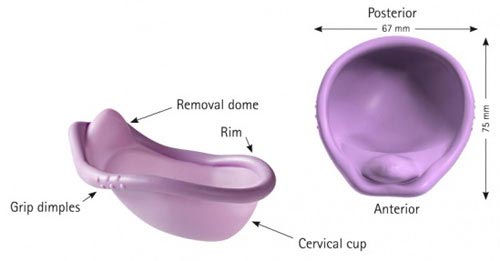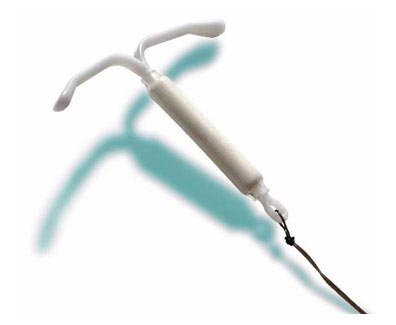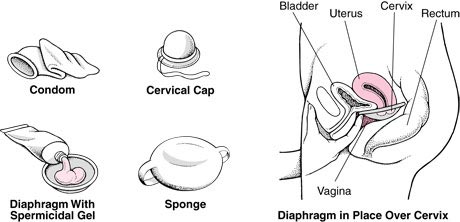Cervical cap is a barrier method of contraception and it works by preventing the entry of the sperm into the womb. This is an effective method of contraception provided it is used properly. There are some side effects but they are rare. It can also prevent sexually transmitted diseases and other sexual infections. If used with male condom, then it is very effective in prevention of sexual infections. Read here the basic working of a cervical cap for preventing pregnancy.A cervical cap is a silicone device that acts as a contraceptive through the barrier method. The shape of the device is like a tiny cup that resembles a thimble and is fitted over the cervix area of the woman. It is positioned into the part of the uterus that meets the upper portion of the vagina. The cervical cap acts as a physical barrier to the sperm of the man and does not allow it to reach the egg of the woman.
How Does Cervical Cap Work?
Have a quick look at the functioning of cervical cap in preventing pregnancy.
Cervix is Covered -
The cap covers the cervix and thus keeps away the sperm. Some women prefer to put some spermicide inside the cap for an added protection. This is of course done before inserting the cap into the cervix.
Effectiveness Depends on Right Usage -
The effectiveness of the cervical cap depends on how properly it is used. Therefore, it is advisable that the woman practice the insertion and removal of the cervical cap before she actually has the intercourse. This is important as some women find it awkward and so practice is required to make this barrier method of contraception effective.
Before insertion it is important the cap is checked for even a minute tear or crack. Usually it is found that the cap deteriorates after one year of regular usage.
Cap Should be Inserted on Time -
The woman is required to insert the cap at least fifteen minutes prior to having
sex and it can be kept in the cervix till up to forty-eight hours. After insertion, the position must be checked again and every time the couple decides to have intercourse, some spermicide can be added to it. It is important to keep the cap in that position for at least six hours after the woman has intercourse.
Printed Instructions Should be Followed -
Every cervical cap comes with the manufacturer’s instructions. These instructions must be strictly followed. Even the removal of the cervical cap requires a lot of practice. It has to be removed correctly. A finger has to be placed inside the
vagina to pull it out. This entails that the woman must be comfortable in placing her finger deep inside her vagina to pull it out.
Some Points to be Noted Regarding the Cervical Cap
You need to keep the following points in mind when you choose to use cervical cap as a contraceptive.
- Every time the cap is used, it must be washed with a solution of mild soap and water.
- It needs to be rinsed properly and air dried before placing it back into its case.
- Never dust it with baby powder
- Lubricants like baby oil, mineral oil or petroleum jelly must never be used
- All these external substances reacts with the silicone in the cap making it brittle leading to possible cracks
- The common vaginal cremes and medicines that are prescribed for preventing yeast infections are also liable to cause damage to the cap.
Side effects of Cervical Cap
Most women do not experience any adverse reaction due to the use of cervical caps. But a few likely side effects are:
- The spermicides used can cause irritation in the vagina and the adjacent area
- If the cap is not removed well in time, there can be vaginal discharge, infection coupled with emission of strong unpleasant odours.
- There can be an allergic reaction in some women due to the silicone in the cervical cap
- The persistent irritation in the cervix can lead to structural changes in the cervical area
- TSS or toxic shock syndrome is a rare medical complication
It is always advisable that the cervical cap is used along with the male condom in order to prevent pregnancy as well as to protect the couple from sexual infections. It is also important to ensure that the woman consults a medical practitioner before opting for the cap as a contraceptive method as certain medical conditions or use of medicines can make the use of the cap inappropriate.












